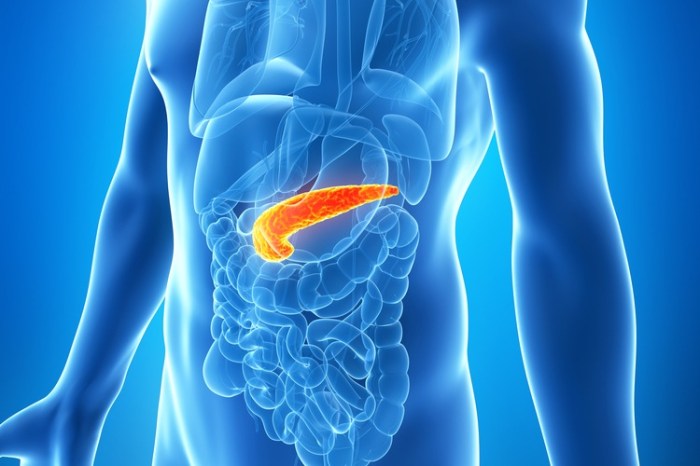Function of pancreas in sharks – The pancreas, a vital organ in sharks, plays a crucial role in both digestion and hormone regulation. Join us as we delve into the fascinating functions of this remarkable organ, exploring its digestive enzymes, endocrine secretions, and unique adaptations.
In the digestive system, the pancreas secretes enzymes that break down carbohydrates, proteins, and fats. These enzymes, including trypsin, chymotrypsin, and amylase, aid in the efficient digestion of prey.
Digestive Function
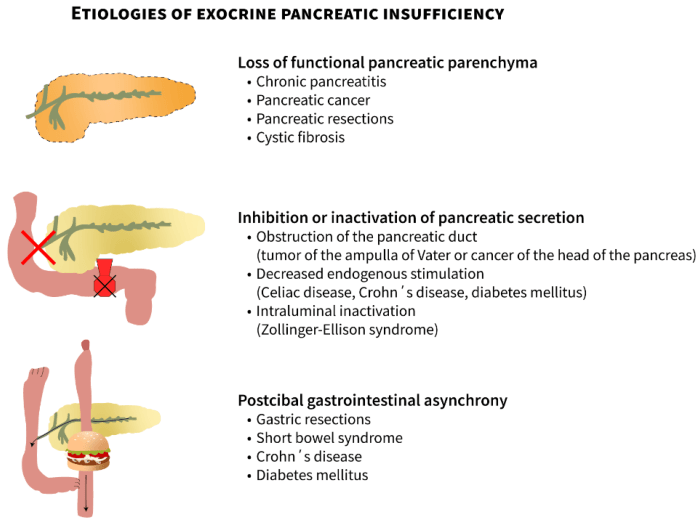
The pancreas is a vital organ in the digestive system of sharks. It plays a crucial role in the breakdown and absorption of nutrients.
The pancreas secretes pancreatic juice, which contains a range of digestive enzymes that help break down different types of food. These enzymes include:
- Amylase: Breaks down carbohydrates into sugars
- Lipase: Breaks down fats into fatty acids and glycerol
- Protease: Breaks down proteins into amino acids
The production and release of pancreatic juice is stimulated by hormones such as secretin and cholecystokinin, which are released in response to the presence of food in the digestive tract.
Endocrine Function: Function Of Pancreas In Sharks
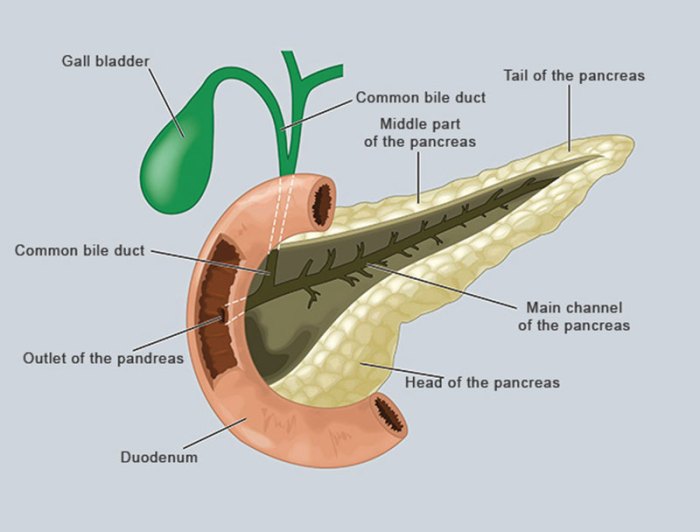
The pancreas in sharks serves not only as a digestive organ but also as an important endocrine gland. It produces and secretes several hormones that play vital roles in regulating metabolism and homeostasis.
Hormones Produced by the Pancreas
- Insulin: Insulin is a hormone that promotes the uptake of glucose by cells, thereby lowering blood glucose levels.
- Glucagon: Glucagon is a hormone that stimulates the release of glucose from the liver, thereby increasing blood glucose levels.
- Somatostatin: Somatostatin is a hormone that inhibits the secretion of both insulin and glucagon, thereby regulating blood glucose levels.
- Pancreatic polypeptide: Pancreatic polypeptide is a hormone that inhibits gastric acid secretion and stimulates pancreatic enzyme secretion.
Regulation of Pancreatic Hormone Secretion
The secretion of pancreatic hormones is regulated by various factors, including blood glucose levels, hormones from the gastrointestinal tract, and neural signals. For example, an increase in blood glucose levels stimulates the secretion of insulin, while a decrease in blood glucose levels stimulates the secretion of glucagon.
Anatomical Structure
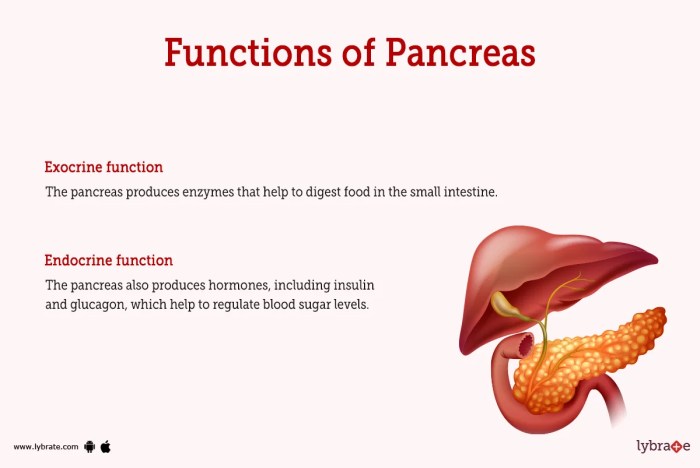
The pancreas in sharks is an elongated, glandular organ located in the abdominal cavity, near the liver and intestines. It is composed of two main lobes, a dorsal and a ventral lobe, which are connected by a narrow isthmus. The dorsal lobe is typically larger and located closer to the liver, while the ventral lobe is smaller and situated near the intestines.
The size and location of the pancreas can vary among different shark species, but it generally occupies a similar position within the abdominal cavity.
The pancreas plays a vital role in the digestive system of sharks, producing enzymes and hormones that aid in the breakdown and absorption of nutrients. If you’re looking for practice questions on consumer math, consider checking out the abeka consumer math test 12 . Returning to the topic of sharks, the pancreas continues to be a fascinating organ, showcasing the incredible complexity and adaptation found in the natural world.
Gross Morphology
The pancreas in sharks has a soft, fleshy texture and is usually pinkish or yellowish in color. The surface of the pancreas is smooth and covered by a thin layer of connective tissue. The internal structure of the pancreas consists of numerous small lobules, which are connected by a network of ducts.
These ducts converge into a main pancreatic duct, which carries pancreatic secretions to the duodenum.
Microscopic Anatomy
The pancreatic lobules are composed of clusters of acinar cells, which are responsible for producing digestive enzymes. These enzymes are stored in small vesicles within the acinar cells and released into the pancreatic ducts when stimulated by hormones or neural signals.
The pancreas also contains clusters of islet cells, which are responsible for producing hormones such as insulin and glucagon. These hormones are released directly into the bloodstream and play a role in regulating blood sugar levels.
Relationship between Structure and Function
The anatomical structure of the pancreas in sharks is closely related to its function. The elongated shape and lobulated structure of the pancreas allow for a large surface area for the production of digestive enzymes and hormones. The location of the pancreas near the liver and intestines facilitates the delivery of pancreatic secretions to the duodenum, where they aid in the digestion of food.
The presence of islet cells within the pancreas allows for the production and release of hormones that regulate blood sugar levels, ensuring proper metabolic function.
Comparative Physiology
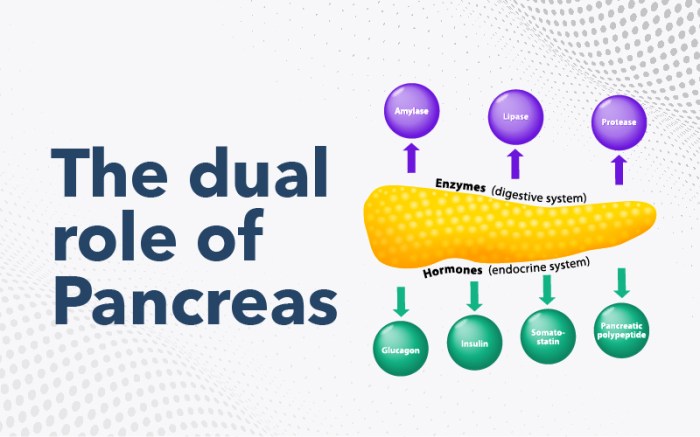
The pancreas of sharks exhibits remarkable diversity in structure and function compared to other fish species. These variations are shaped by evolutionary adaptations and ecological niches.
Unique Adaptations in Pancreatic Function, Function of pancreas in sharks
- Specialized Enzymes:Sharks possess a unique set of digestive enzymes in their pancreas, including trypsin, chymotrypsin, and elastase, which enable them to efficiently break down the tough connective tissues and cartilage found in their prey.
- Large Pancreas:Compared to other fish, sharks have a relatively large pancreas, reflecting the high metabolic demands of their active lifestyle and carnivorous diet.
- Reduced Endocrine Function:Unlike bony fish, sharks have a reduced endocrine function in their pancreas, with insulin and glucagon being produced primarily by the islet cells in their spleen.
Evolutionary Implications
The variations in pancreatic function among shark species are likely driven by evolutionary adaptations to their specific habitats and feeding strategies. For example, the specialized enzymes in the pancreas of predatory sharks allow them to exploit prey with tough exoskeletons or cartilage, while the reduced endocrine function may reflect the lower metabolic rates of sharks compared to bony fish.
Questions and Answers
What are the main enzymes secreted by the pancreas in sharks?
Trypsin, chymotrypsin, and amylase are the primary enzymes secreted by the pancreas in sharks.
How does the pancreas regulate blood sugar levels in sharks?
The pancreas secretes insulin and glucagon, hormones that regulate blood sugar levels.
